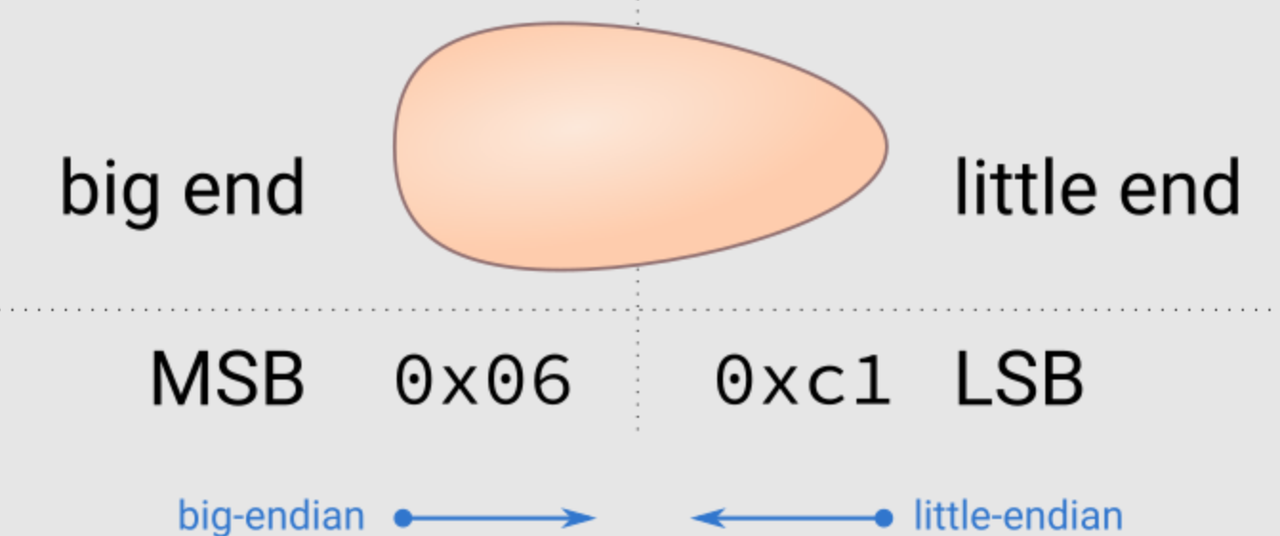
Big-endian and Little-endian byte ordering in computer memory
When dealing with multi-byte data(integers, floating-point numbers, and other binary data) in computer memory, it's essential to understand how the bytes of a data type are arranged. This arrangement, known as endian representation, determines the byte order in which individual bytes are stored. There are two main types of endian representations: big-endian and little-endian.
Big-endian: In big-endian format, the most significant byte of a multi-byte data type is stored at the lowest memory address, and the least significant byte is stored at the highest memory address. It is as if the data is read from left to right.
Little-endian: In little-endian format, the least significant byte is stored at the lowest memory address, and the most significant byte is stored at the highest memory address. It is as if the data is read from right to left.
Endian representation is crucial when data is transmitted or shared between systems with different endianness. If systems with different endianness attempt to interpret the data directly, the values may be misinterpreted, leading to errors in the program.
To handle this, data conversion is required when exchanging data between systems with different endianness. This ensures that data is properly interpreted and remains consistent across different platforms.
For example, let's consider a 32-bit integer value with the hexadecimal representation "0x12345678". In big-endian format, it is stored in memory as:
In little-endian format, it is stored as:
Most modern systems, including Intel and AMD processors, use the little-endian format due to its simplicity and performance advantages. However, it's essential to be aware of the endianness when working with binary data and perform data conversion as needed to ensure data integrity and proper interpretation.